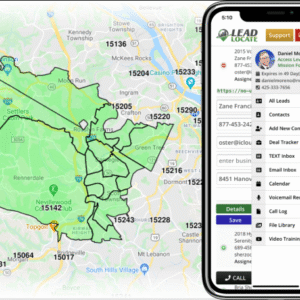Introduction
The Proppant Market plays a vital role in the oil and gas industry, particularly in hydraulic fracturing (fracking) operations. Proppants are solid materials—such as sand, resin-coated sand, or ceramic particles—used to keep fractures open during or after hydraulic fracturing. This process increases the flow of hydrocarbons from oil and gas reservoirs, making extraction more efficient and economically viable. The global proppant market has witnessed substantial growth over the past decade, driven by the rising demand for unconventional oil and gas resources, technological advancements in hydraulic fracturing, and the growing global energy demand.
Market Overview
The global proppant market is segmented by type, application, and region. Based on type, the market includes frac sand, resin-coated proppants, and ceramic proppants. Among these, frac sand dominates due to its cost-effectiveness and availability, although ceramic proppants are gaining traction in high-pressure and high-temperature wells due to their superior strength and conductivity.
Key application areas for proppants include:
-
Shale gas extraction
-
Tight gas reservoirs
-
Coalbed methane production
-
Deepwater oil fields
North America, particularly the United States, remains the largest market for proppants due to its well-established shale gas industry and the extensive use of hydraulic fracturing in oil and gas exploration.
Types of Proppants
-
Frac Sand Proppants
-
Made from high-purity quartz sand
-
Most widely used due to low cost and good performance in moderate pressure wells
-
Widely available in North America and parts of Asia
-
-
Resin-Coated Proppants (RCPs)
-
Manufactured by coating sand or ceramic with resin
-
Offer better flowback control and improved durability
-
Suitable for medium to high-pressure wells
-
-
Ceramic Proppants
-
Made from sintered bauxite, kaolin, or blends
-
High strength, ideal for deep and high-pressure wells
-
More expensive but provide excellent fracture conductivity
-
Market Growth Drivers
1. Rising Shale Gas and Tight Oil Production
The boom in shale gas production in the U.S. and increasing exploration of unconventional reserves globally have fueled the demand for proppants. Hydraulic fracturing requires significant volumes of proppants to maximize hydrocarbon recovery.
2. Technological Advancements in Fracking
Innovations such as horizontal drilling and multi-stage fracking have increased the efficiency of oil and gas extraction, thereby boosting proppant consumption.
3. Growing Global Energy Demand
With rising industrialization and urbanization, global energy consumption is increasing, especially in developing economies. This drives oil and gas exploration activities and, in turn, proppant demand.
4. Expansion of Deepwater and Offshore Drilling
Advances in offshore drilling technology have opened new exploration sites, requiring high-strength proppants like ceramic and resin-coated types for extreme conditions.
Challenges Facing the Proppant Market
While the market outlook is promising, several challenges persist:
-
Environmental Concerns: Hydraulic fracturing has faced criticism due to its potential environmental impacts, including water contamination and seismic activity. This has led to stricter regulations in certain regions.
-
Volatility in Oil and Gas Prices: Fluctuating crude oil prices can directly impact drilling activities, thereby affecting proppant demand.
-
High Transportation Costs: Proppants, especially frac sand, are bulky and heavy, making logistics a significant cost factor.
Regional Analysis
North America
Dominates the global market due to the extensive shale gas reserves in the U.S. and Canada. The Permian Basin, Bakken, and Marcellus Shale are key areas of proppant consumption.
Asia-Pacific
Emerging as a high-growth region due to increasing oil and gas exploration activities in China, India, and Australia.
Middle East & Africa
Steady growth is expected as countries diversify their energy production and explore unconventional reserves.
Europe
Limited growth due to environmental restrictions and reduced drilling activities in certain countries.
Future Trends in the Proppant Market
-
Shift Toward High-Performance Proppants
With deeper wells and harsher drilling environments, demand for ceramic and resin-coated proppants will increase. -
Sustainable and Eco-Friendly Solutions
Development of proppants from recycled materials or eco-friendly manufacturing processes could gain traction. -
Automation and Digitalization in Mining
Digital tools in proppant production and logistics can enhance efficiency and reduce costs. -
Geographic Diversification of Supply
To reduce transportation costs and supply chain risks, companies may set up production facilities closer to drilling sites.
Competitive Landscape
The proppant market is moderately fragmented, with a mix of global and regional players. Key companies include:
-
U.S. Silica Holdings, Inc.
-
CARBO Ceramics Inc.
-
Fairmount Santrol
-
Hi-Crush Inc.
-
Saint-Gobain Proppants
-
Badger Mining Corporation
These companies are investing in new product development, capacity expansions, and strategic partnerships to strengthen their market position.
Data Bridge Market Research analyses that the proppant market will witness a CAGR of 6.97%. Proppant market report analyses the growth which is growing due to the proppant market is expanding as a result of factors such as improved fracturing technology and rising demand from the oil and gas industries.
Proppants are gritty, uniformly sized materials that are mixed with fracturing fluid during the hydraulic fracturing (fracking) process to keep open ground fractures. Proppant demand has recently increased as oil and natural gas wells are modified to yield more oil and gas through hydraulic fracturing. Proppant solutions help to improve well production capacity by delivering more oil and natural gas per day by combining new drilling techniques with ultra-sophisticated frac designs.
Get More Details:
https://www.databridgemarketresearch.com/reports/global-proppant-market
Conclusion
The proppant market is poised for steady growth over the next decade, driven by the increasing demand for unconventional oil and gas, technological advancements in hydraulic fracturing, and global energy requirements. However, environmental concerns and oil price volatility remain significant challenges. Companies that innovate, adopt sustainable practices, and adapt to shifting energy trends will be best positioned to thrive in this evolving market.




